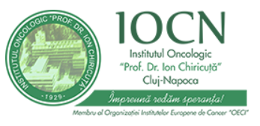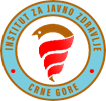Background 
Public health problem
Cancer is the leading or second cause of death in most countries in Europe, with colorectal, breast and cervical cancer responsible for 20% of cancer mortality. Also in the 17 middle income countries in Eastern and Central Europe, more than 88,000 people are dying from colorectal cancer each year, more than 51,000 women from breast cancer and around 16,000 women from cervical cancer. When including women only, breast, cervical and colorectal cancer are the first, second and seventh cause of cancer mortality in these countries.
Substantial progress has been made in the early detection and treatment of breast, cervical, and colorectal cancer. Steady declines in cancer mortality have been observed since the 1980s in most Western European countries. In many countries mortality has decreased by 0.8-1.5% per year since 2006. However, declines started a decade later in Central and Eastern Europe and for colorectal cancer and cervical cancer even increasing trends can be observed in some Eastern-European countries, for example in Bulgaria and Romania. Age-standardised mortality rates of breast, cervical and colorectal cancer are 2-3 fold higher in Eastern European countries than in Western European countries. Great inequity thus persists in cancer mortality across Europe.
Screening programmes
Although many Eastern European middle income countries have implemented some form of breast, cervical and/or colorectal cancer screening, their implementation is currently far from optimal. Key barrier in most of these countries is that they more often have non-organised (opportunistic) screening programmes, leading to lack of data collection and lack of good quality assurance systems. In addition, coverage of opportunistic screening is commonly low and vulnerable minority groups are not reached. Screening also puts further pressure on the clinical and economic resources available. Given the more limited resources in low and middle income countries, it is especially important to ensure that money is well spent and that citizens benefit optimally. The implementation of an efficient country-specific screening programme is therefore difficult.
This need for improvement of cancer screening programmes led to the Horizon 2020 funded EU-TOPIA project in 2015-2020. In this project, we developed tools to collect data and monitor breast, cervical and colorectal cancer screening programmes in Europe, to analyse barriers to optimal screening and to perform a stakeholder analysis. Furthermore, we developed online decision models, that can be made country-specific (for example to the existing cancer incidence and screening programme), to estimate the long-term effects of cancer screening programmes and the impact of potential improvements to these programmes in a specific country (for example cancer deaths prevented, overdiagnosis, and cost-effectiveness over 20 years). We organised workshops attended by researchers, policy makers, and screening programme coordinators of almost all countries in Europe to demonstrate and practice with the tools and exchange experiences. This way, we trained researchers, programme coordinators and policymakers from all over Europe to use our developed tools and eventually construct their own country-specific road map. This road map is a document with prioritised actions detailing feasible changes to the screening programmes, based on country-specific data with results of the model, the barrier analysis and the stakeholder analysis to improve screening programmes.
EU-TOPIA-EAST
In the current EU-TOPIA-EAST project, we will build upon the expertise and tools developed in the EU-TOPIA project and take the road maps to the next level: implementation of feasible, country-specific interventions. We will implement interventions to achieve improvements in cancer screening in three Eastern-European middle-income countries: Georgia (breast), Romania (cervical) and Montenegro (colorectal cancer). The phase of cancer screening implementation in each of these countries is very different and they face different barriers. For example, in Georgia only 10% of the women attend breast cancer screening, while in Romania considerable inequity exists in attendance to cervical cancer screening. Minority groups such as Roma hardly participate in screening. In Montenegro the colorectal cancer screening programme is well accepted, with 60% of the target population attending, but the IT system and awareness should be improved. Because we cover a broad spectrum of implementation phases and settings, we expect other middle-income countries can learn from this project.
In a second part of the project, we will involve national, regional and local policymakers of Eastern Europe and Mediterranean countries in the project through organising interactive workshops and round-tables. During these workshops and round-tables, we will build capacity by disseminating lessons learnt during implementation studies in the exemplary countries and train participants in the use of monitoring and evaluation tools, aimed at developing their own road maps and improving their cancer screening programmes.











